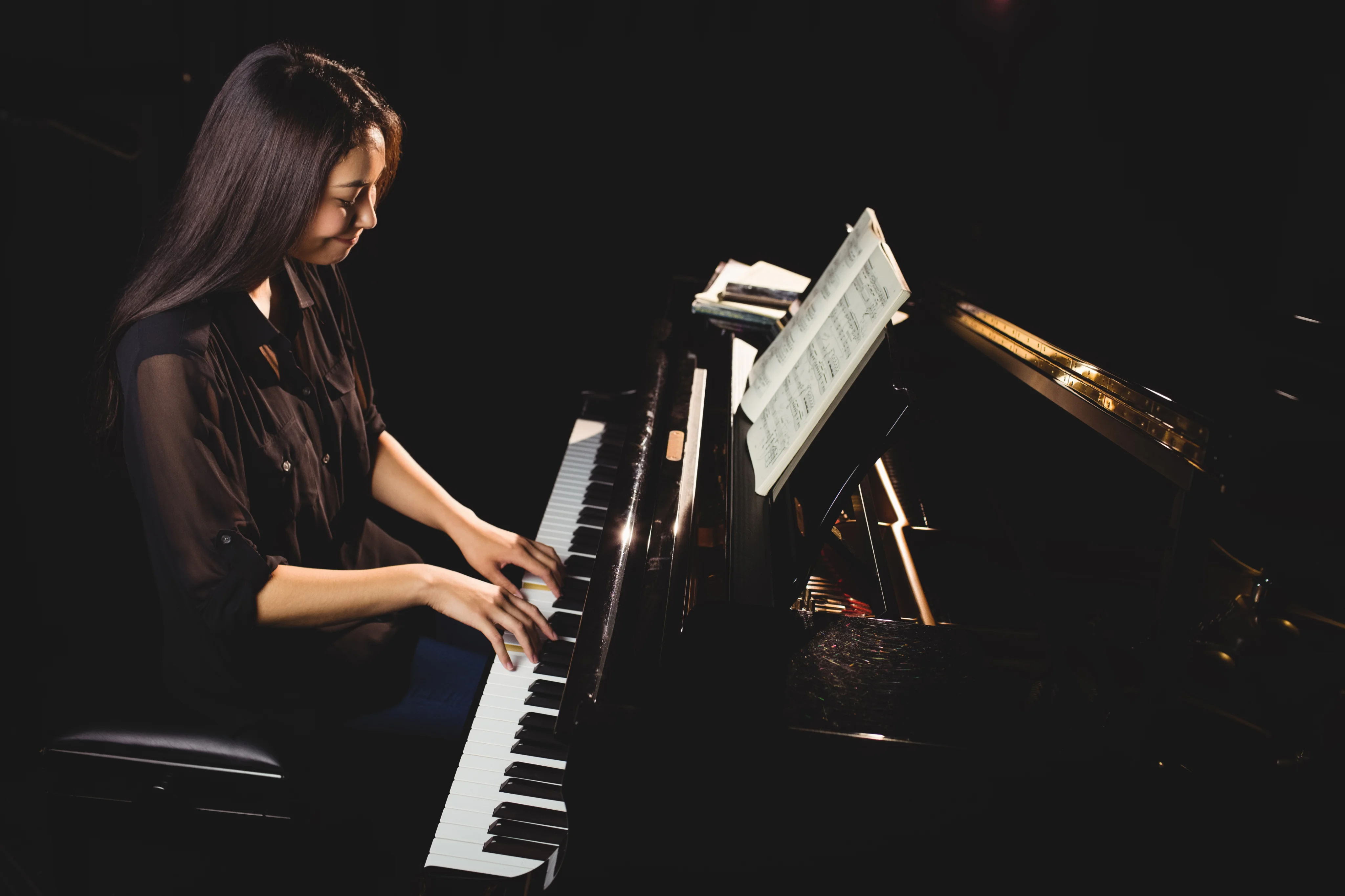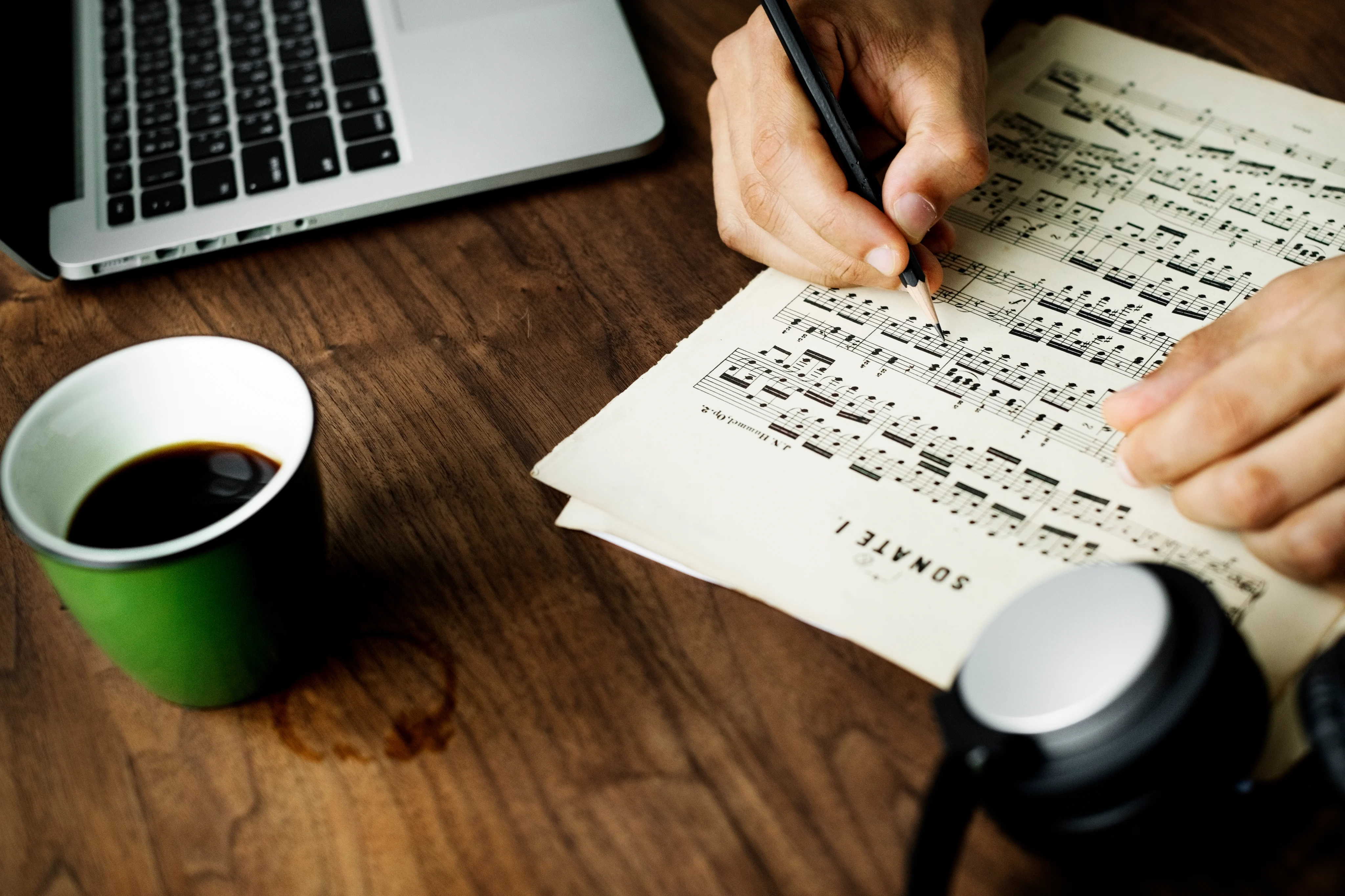The piano is an instrument that demands dedication and patience and with the development of proper techniques, it will reward you with a satisfying and fulfilling journey of learning. The first and foremost step for every aspiring pianist is to gain an in-depth knowledge of foundation structure.
Let’s explore together certain essential piano techniques for beginners, including postures, hand positions, scales, arpeggios, and finger exercises, that will help shape you into the pianist you want to become.
The Importance of Proper Piano Techniques
Good technique is not only about knowing about practical skills but also the ability to incorporate body movements that maximise efficiency and minimise tension. Following a proper technique will guide you to play the instrument gracefully. It is necessary to adhere to the right methods of piano playing from the beginning to make your journey smooth and easy.
Correct Posture and Hand Position for Beginner Pianists
Posture is one of the necessary elements of good piano playing. The ideal posture would be to sit on the edge of the bench with a back straight and feet flat on the floor while keeping the elbows slightly above the keys, and arms hanging loosely from the shoulders.
The fingers should be curved, levelling the wrists – not too high or low. Maintaining this natural hand position will enable you to control the keys without straining the muscles.
Basic Finger Exercises for Piano Beginners
A pianist should have strong and flexible fingers, for which doing regular finger exercises is an important aspect of learning piano. It is advisable to learn simple exercises such as five-finger scales, where each finger presses a different key. The etudes of Hanon and Ferdinand Beyer’s ‘Elementary Method for the Piano, Op. 101’ are good exercises to develop finger independence and dexterity. Basic finger drills will help improve your ability to move quickly and smoothly across the keys.
Introduction to Piano Scales and Their Techniques
To learn piano techniques, one must first be acquainted with scales. It teaches finger coordination and understanding of key signatures. Moreover, it helps in developing your ear for different tonalities. Start with the C Major scale, using the correct fingering pattern (1-2-3-1-2-3-4-5) and gradually expand to other major and minor scales. Playing scales with consistent rhythm and even tone will enhance your overall playing ability.
Essential Piano Arpeggio Techniques for Beginners
One fundamental technique for beginners is the Arpeggios, commonly called broken chords. Arpeggios are chords played one note at a time instead of all the notes together. For arpeggios, one has to roll through the notes of a chord (e.g., C-E-G-C for a C major arpeggio). This technique requires smooth hand movements and coordination between fingers. To ensure fluidity in playing the piano, one must practise arpeggios in different keys, paying special attention to hand position and wrist movement.
Developing Finger Independence on the Piano
Finger independence means the ability to move each finger separately without affecting the others. This skill allows the player to transition smoothly, taking precise control over individual notes. Practising chromatic scales and finger lifting exercises, where one finger presses a key while others stay relaxed, are great for building this skill.
Chord Progressions and Techniques for Beginners
Every music piece has a base harmony built with a sequence of chords called Chord Progressions. Understanding basic chords and learning to transition between them will give you an idea of how chord progression works. Practise chord changing while maintaining proper hand position and keeping your fingers relaxed.
Learning Simple Piano Pieces Using Proper Techniques
You can now start playing simple piano pieces with some of the above basic techniques you’ve just learnt. Start with songs that use basic chords, simple melodies, and easy rhythms that will help you establish the correct methods. Pay attention to your posture, finger movements and consistent tone to ensure proper technique as you play.
Creating an Effective Piano Practice Routine
Regular practice is crucial to progress, so set up a structured routine and follow it diligently. Allocate a time each day to warm up with finger exercises, scales and arpeggios, and chord transitions. Splitting your practice session into segments will ensure that you are addressing all areas of technique.
Common Beginner Piano Technique Mistakes and How to Avoid Them
The most common mistake beginners make is crumpling their fingers rather than curving them. While playing the piano with stiff wrists or improper posture could lead to injury, it can also be frustrating as it will keep you from progressing. The best way is to be mindful of your posture and hand position. Record your practice sessions to check on your techniques so you can work on necessary areas that need improvement or correction. It is ideal to have a teacher or subject matter experts who can guide you and provide feedback that is beneficial to you, some of which can be found at music academies such as Artium Academy.
Conclusion
It is imperative to develop proper techniques to master the piano. You should focus on posture, finger exercises, scales, arpeggios, and chord progressions to lay the groundwork for more advanced playing. Consistent practice and avoiding common mistakes will help build a strong technical foundation, boosting your confidence and joy in playing. At Artium Academy, our online piano classes and piano online course are designed to provide a structured curriculum and mentorship from top music experts, making it one of the best places to build a solid musical foundation.
Book A FREE Trial and start your musical journey today!
















